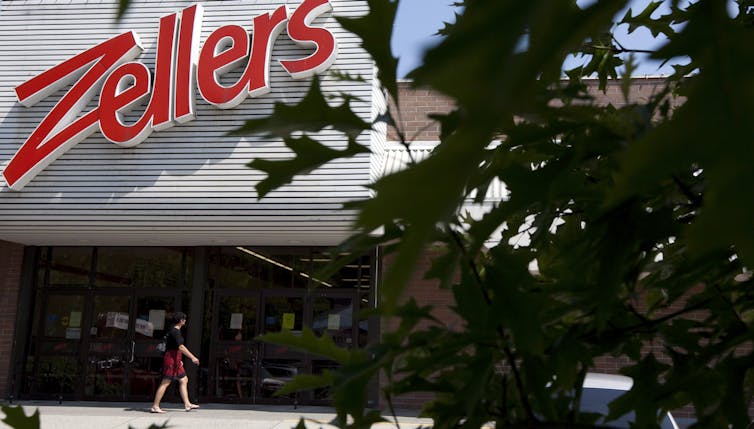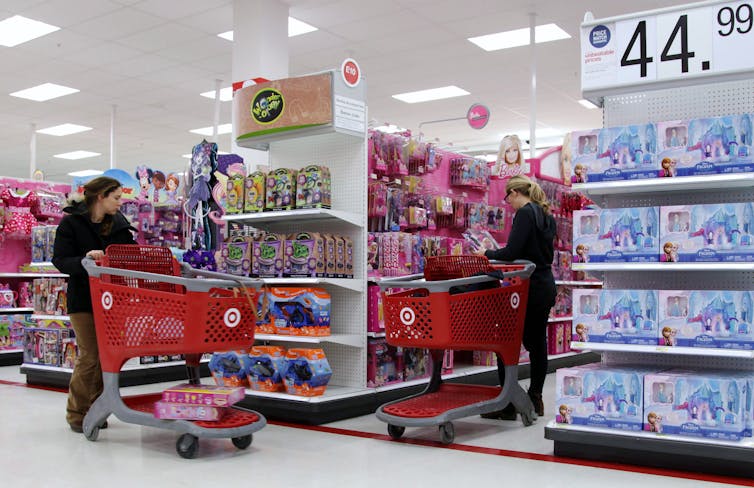
Since Nordstrom announced it was pulling out of Canada, there has been a maelstrom of articles about the pervasive failure and exodus of U.S. retailers from Canada. Aside from Nordstrom, American retailers that have failed in Canada include Bed Bath and Beyond and Target.
But the list of Canadian retail failures is almost as long as the U.S. list, and includes well-known names such as Zellers, Eaton’s and all of the Dylex brands. Meanwhile, some of the most successful retailers in Canada — including Home Depot, Walmart and Costco — are also American.
So the perspective that U.S. retailers are somehow more prone to failure than Canadian retail chains is unconvincing. However, something is going on that makes retailing in Canada more challenging than ever.
Online shift isn’t the reason
One of the key explanations given by pundits for why retail is so challenging in Canada is the switch to online buying. For many, the advantages of online shopping are multifaceted, including convenience, 24/7 availability and a wider selection of products compared to traditional retailers.
According to Statistics Canada, the proportion of retail e-commerce sales rose to 6.2 per cent in 2022 from 3.9 per cent in 2019.
In the U.S., 14.8 per cent of all retails sales were online in 2022. This was a slight decrease from the height of the pandemic, when close to 16 per cent of sales were online. In other words, online retailing has more than doubled in less than six years. Amazon is reported to have a 45 per cent share of online retail sales.
But this doesn’t explain why the Canadian marketplace is more affected by retail failures than other countries. The shift to online buying has affected all Organisation for Economic Co-operation and Development countries, but the level of retail failures and closures in Canada seems disproportionately high.

The Canadian marketplace
There are four factors that make the Canadian retailing environment difficult for newcomers to break into.
1. Economies of scale. Canada has a population of 39 million spread across a very large geographic area. Compared to other G-7 countries, retailers don’t benefit from economies of scale in Canada unless they operate across the entire country. A regional operator in the northeast U.S., for example, has a potential market of more than 125 million, while a regional operator in Canada is lucky to have a potential market of 15 million.
When it comes to ordering sufficient quantities of products from overseas manufacturers, Canadian retailers are at a massive disadvantage. With online retailers like Amazon that operate across borders, this disadvantage is amplified. The economies of scale also hamper Canadian firms due to smaller sales volumes. Smaller volumes mean that fixed business costs, like salaries and marketing, are higher on a per product basis.
2. Supply chain challenges. Because Canada is not a densely populated country, the distances that products need to travel to make it to consumers are high, compared to other countries. Regional distribution centres can overcome this challenge, but they could increase the cost and complexity of already-strained supply chains.
3. Tough regulatory environment. Compared to the U.S., Canada has a more regulated environment for retailers. Whether it is employment laws, building permits, environmental regulations or health and safety rules, Canada is more demanding. This creates added cost for retailers in terms of startup, operations and compliance. Canadian compliance laws are tough for good reason — corporations play a key role in the standard of living and are therefore held to a high standard.
4. Canadian identity. While Canadians buy and consume products imported from everywhere, there is a segment of the population that is concerned about Canadian identity. For this group, Canadianess is important. They see Canada as a small country living in the shadow of the U.S., trying to make its mark in the world.
The segment is small, but it still reduces the potential market for foreign retailers that need to compete against an existing retailer with a strong Canadian identity. Because Canada is the smallest of the G-7 countries, this issue is more important in Canada. There are Canadians who don’t want to see more dollars than necessary going south of the border.
Strategies for success
So how can new retailers maximize their chances of success? There are three strategies that, if followed carefully, increase the likelihood of newcomers’ success in Canada.
1. Go big or go home. Because the Canadian marketplace is substantially smaller in size, a newcomer needs to commit to succeed. The perceived advantage of opening a small number of stores is that is reduces risk, but this strategy poses a problem: the economies needed for a company to succeed never materialize.
Going big means more than just having a bricks and mortar footprint across the country. It also means building a strong online presence that allows synergy between online ordering and in-person browsing to flourish. Many consumers who order from the Walmart or Canadian Tire online stores inspect the goods at the physical stores beforehand.

2. Be true to yourself. If a retailer has enjoyed success in another market, it needs to figure out how to replicate that in Canada. This is especially true for big U.S. retailers. Ninety per cent of the Canadian population lives within 160 km of the U.S. border and many Canadians cross the border to go shopping.
Long before Target entered Canada, Canadians knew it to be a more stylish alternative to Walmart with competitive, if not slightly higher, prices. This is what Canadians expected when they went to Target in Canada for the first time. But it was not what they found. Instead, they found empty shelves and prices that were inconsistent with those at U.S. Targets and non-competitive with Canadian Walmarts.
3. Understand the market. The biggest challenge for a new Canadian retailer is recognizing regional differences despite the smaller population. One-size-fits-all is something retailers need to leave behind. Beyond the obvious challenge of developing a specific Québecois retail strategy, the differences across Canada in terms of climate, leisure activities and culture are significant. There are cities in Canada where Chinese New Year and Diwali are as important as Thanksgiving and Christmas, for example.
In Canada, most retailing initiatives that fail can be attributed to a lack of recognition of the importance of critical mass to compete effectively. By incorporating these three strategies into both launch and operating plans, newcomers may find Canada to be more welcoming than recent history suggests.
David Soberman does not work for, consult, own shares in or receive funding from any company or organisation that would benefit from this article, and has disclosed no relevant affiliations beyond their academic appointment.
This article was originally published on The Conversation. Read the original article.







